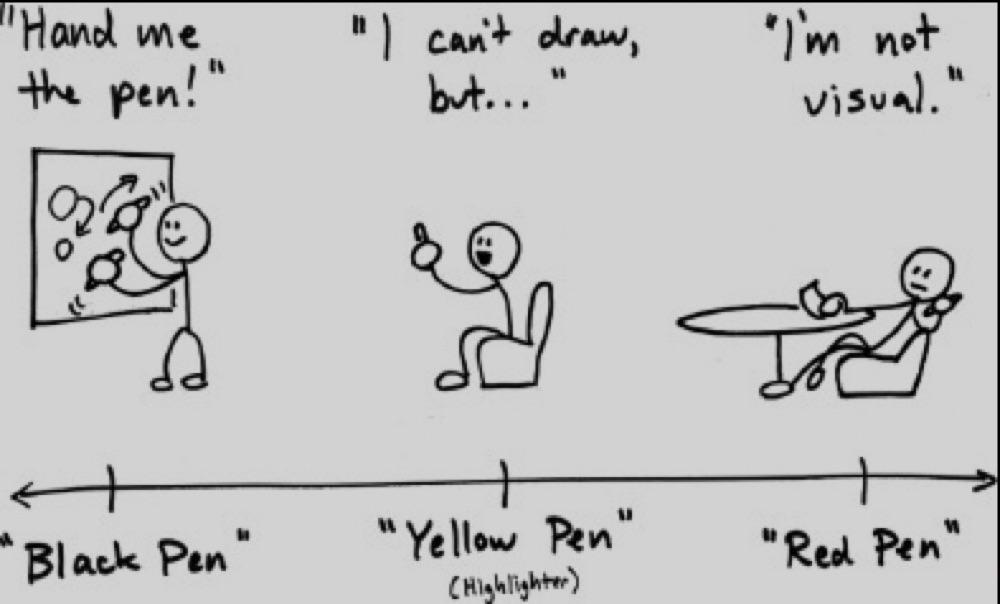Black Pen, Yellow Pen, Red Pen:
There are three kinds of visual thinkers:
- The black pen : People who can’t wait to start drawing.
- The highlighters : Those who are happy to add to someone else’s work.
- The red pen : Those who question it all—right up to the moment they pick up the red pen and redraw it all.
27
431 reads
CURATED FROM
IDEAS CURATED BY
The more one seeks to rise into height and light, the more vigorously do ones roots struggle earthward, downward, into the dark, the deep — into evil.
The Back of the Napkin proves that thinking with pictures can help anyone discover and develop new ideas, solve problems in unexpected ways, and dramatically improve our ability to share our insights. This book will help readers literally see the world in a new way.
“
The idea is part of this collection:
Learn more about business with this collection
Identifying the skills needed for the future
Developing a growth mindset
Creating a culture of continuous learning
Related collections
Similar ideas to Black Pen, Yellow Pen, Red Pen:
The kind of average
There are three common kinds of average:
- Mean. Add up all the values and divide by the quantity of the values.
- Median. The value in the middle of the sample.
- Mode. The most common value.
The Big Three - Day 151
"All you need are these: certainty of judgement in the present moment; action for the common good in the present moment; and an attitude of gratitude in the present moment for anything that comes your way." - Marcus Aurelius
Perception, Action, Will. Those three sum up the critica...
Get Social
If you want to keep your brain happy, be clear on who your support network is. Know who matters and nurture those relationships.
The best thing to do is to talk with the person in real life or meet up for an activity. The next best thing is talking on the phone, which is b...
Read & Learn
20x Faster
without
deepstash
with
deepstash
with
deepstash
Personalized microlearning
—
100+ Learning Journeys
—
Access to 200,000+ ideas
—
Access to the mobile app
—
Unlimited idea saving
—
—
Unlimited history
—
—
Unlimited listening to ideas
—
—
Downloading & offline access
—
—
Supercharge your mind with one idea per day
Enter your email and spend 1 minute every day to learn something new.
I agree to receive email updates
